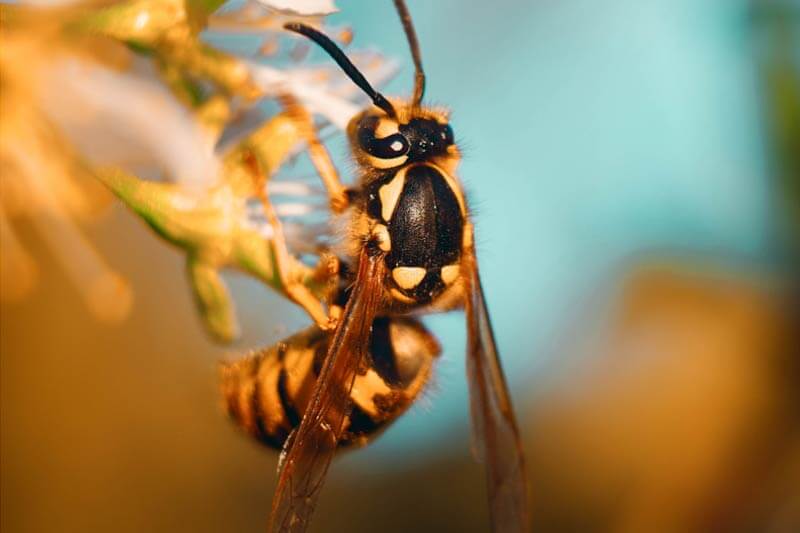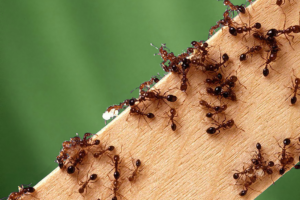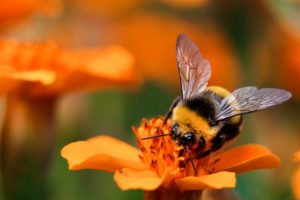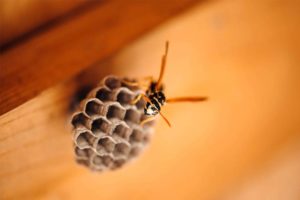Yellow jackets are aggressive, territorial, and sting repeatedly. You don’t want to share your backyard with one of their colonies! Learn to identify these feisty insects by becoming familiar with their species, nests, and habits.
Yellow Jacket Identification
There are quite a few species of yellow jacket! Below, you’ll find key information for identifying six of them. But first, you should know that all species of yellow jacket sting repeatedly and have black and yellow stripes.
Different Species
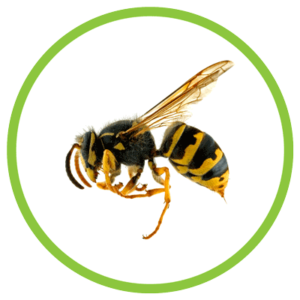
Aerial Yellow Jacket
The Aerial Yellow Jacket (Dolichovespula arenaria) is known by a few different names, including the Yellow Hornet and the Sand Hill Hornet. It is found throughout the United States, except in the Great Plains states. This insect is usually half an inch in length and creates hanging, umbrella-like nests. They prefer shady spots like trees, shrubs, and under eaves.
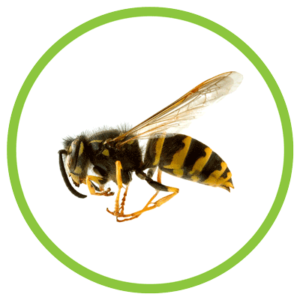
Common Yellow Jacket
Vespula vulgaris, the Common Yellow Jacket, is between 3/8” – 1/2” long. It resides mostly in Western and Northeastern states. Also, this yellow jacket has definite markings: black abdominal spots, four yellow thorax spots, a rear black diamond, and yellow stripes behind each eye. Their spherical, brown papery nests are found in coniferous forests, often in rotted stumps, fallen logs, or other shady locations.
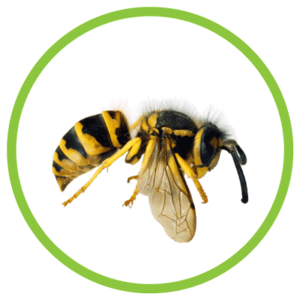
Eastern Yellow Jacket
Eastern Yellow Jackets, also called Vespula maculifrons, call Eastern North America home. It looks very similar to the Aerial Yellow Jacket but is sometimes a bit smaller, closer to 3/8” in length. You’ll find their tan, papery nests underground in deciduous forests.
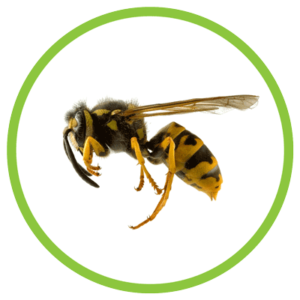
German Yellow Jacket
Vespula germanica is the scientific name for the German Yellow Jacket. It lives in both the Eastern and Western United States. Also, it’s especially bold and aggressive. Be on the lookout for its abdominal black spots and extra heavy black stripes. Plus, it is a bit bigger than most, reaching 5/8” in length. Their large, gray, brittle, and ball-shaped nests are usually underground.
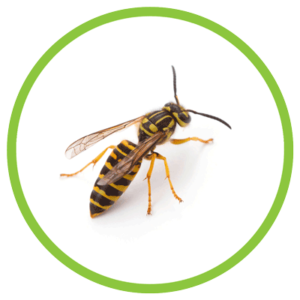
Southern Yellow Jacket
The Southern Yellow Jacket (Vespula squamosa) is found in the Eastern North America and as far south as Central America. Its length is about half an inch, and it has standard black and yellow markings. They create ground nests that appear like paper cartons.
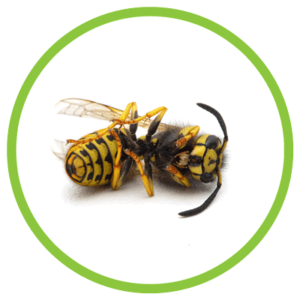
Western Yellow Jacket
Vespula pensylvanica, the Western Yellow Jacket, is mostly yellow. It is between 1/2” and 5/8” in length and resides in Western North America. Their nests are often found in the ground and out of sight. However, sometimes they will nest in wall voids, attics, and other undisturbed places.
YELLOW JACKET NESTS
There are two types of nests made by yellow jackets. Grounds nests are the most popular, which are hard to spot. But some species also make aerial nests, so keep your eyes open!
Ground Nests
These nests are built underground and are often hidden threats to unsuspecting bystanders. Also referred to as concealed nests, ground nests can be made two inches or even two feet below the surface. To identify the entrance, look for a hole with a small pile of dirt around it.
Where are they found? Ground nests are most commonly found in areas with sandy, well-drained soil and limited vegetation. Look for them in plant roots, fallen timber, or in holes underground.
Which yellow jackets build ground nests? Eastern, Western, Southern, and German Yellow Jackets build their nests underground.
Aerial Nests
These are constructed of a paper-like material made from wood fiber and saliva. They have an inner cone made of hexagon-shaped tubes that yellow jackets cover with a paper-maché-like exterior. Then, from the outside, the hive appears oval-shaped with stripes. In certain parts of the United States, they may grow into what’s referred to as a “super nest.” Housing 4,000 or more yellow jackets, these super nests extend onto nearby overhanging items like tree branches or house eaves. Some of the largest have been found inside objects like abandoned cars.
Where are they found? Aerial nests are typically built in exposed locations like trees, utility poles, overhangs, or structures.
Which yellow jackets build aerial nests? Aerial Yellow Jackets
YELLOW JACKET HABITS
Yellow jackets are overly aggressive. They live in large colonies, with up to 4,000 workers. During the summer, yellow jackets may swarm around your picnic food because they are attracted to proteins and sweets. Also, they are most active late summer into fall.
AVOID BEING STUNG
Because of the territorial tendencies of yellow jackets, it is best to steer clear of them. Plus, when they sting, they often sting repeatedly. This can lead to an excruciating injury, an allergic reaction, or even death.
First, pay close attention to your surroundings when you’re outdoors. Look out for holes in the ground, rotting logs, and optimal shady spots. When possible, keep your food and trash covered, and avoid wearing sweet-smelling perfumes when spending time outside. These scents will attract yellow jackets.
If you find a nest on your property, keep your distance. Then call a specialist to assist you in its removal.
Lastly, make sure you know what to do if you are stung. Bee and wasp sting allergies can be incredibly severe, resulting in anaphylaxis and cardiac arrest within minutes.4 Care for your injury and also pay close attention to your symptoms. Immediately call 911 and, if possible, administer epinephrine if an emergency arises.


